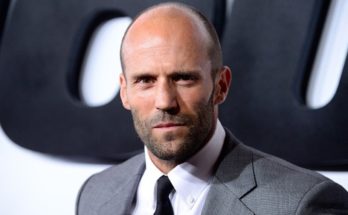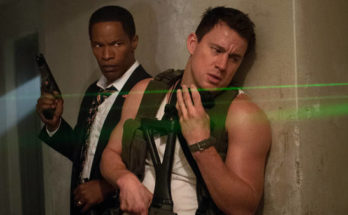Perhaps the most important aspect of Kung Fu Panda 2 (and I never thought I would type this) is that the series is aging with its fans; so much so that I could expect Panda 3 to be the most adult of the series. They’ve already started exploring more personal themes than the last entry, which mostly took the themes of following your heart and believing in yourself and employed them. Here, the story deepens more than you might expect, dealing with themes of adoption, unrequited love, and acceptance of others. More importantly, the imagination of the film has grown tenfold.
Of course, there’s a bit of formula; you can’t escape the fact that it’s a kid’s movie, but it gets further away from the drama-killing formula that impeded the first film. When I sat down in the movie theater in 2008, I knew exactly what I was getting. It was going to be a film about a goofy “man-boy” (bear-cub?) panda who doesn’t quite belong, who gets a Jungian call to duty to learn kung fu and save his village. Here, that formula is side-stepped in favor of a generally engrossing and slightly depressing storyline. Po (voiced by Jack Black) finds out that he’s adopted and wants to find his biological parents, he’s in love with Tigress (voiced by Angelina Jolie), who may or may not share his feelings, and the entire country of China is under attack by a villain who has a cannon that shoots a blast so powerful it wipes out any trace of the kung fu that seems to be the nation’s bread-and-butter. So Po and his Furious Five – Tigress, Crane (voiced by David Cross), Mantis (voiced by Seth Rogen), Monkey (voiced by Jackie Chan), and Viper (voiced by Lucy Liu) – go off to defeat it; but how do you use kung fu to stop something that stops kung fu? “By finding inner peace,” Po’s mentor, Master Shinfu (voiced by Dustin Hoffman), tells him. That’s heavy.
Kung Fu Panda 2 is more thoughtful than a film like this should have any right to be. The story is a kick in the gut if you’re not expecting it from the start, filled with feelings of being lost and having no idea where you are, who you are, and what you’re supposed to do to get back. Imagine someone threatens the thing you love most in the world, and the threat is very real, and you don’t know how to defend it. It’s a calm film, as well; the frenetic energy of the first one is still here, but spread out enough to not feel as crowded as the last time around. A major complaint I had from the first one: it’s funny, it’s cool, it’s fun, but it’s too much sometimes. This one gets the mix right. In fact, while I did enjoy the first one, I’d go so far to say that this is an improvement on it. It’s more organized, not so hellbent on the easy laugh, and unafraid to dig deeper into its own theories and personality, something that it encourages its viewers to do as well. Parts of the film could be life lessons.
Po and the Furious Five find themselves deep in the heart of China, fighting an ancient evil in the form of Lord Shen (voiced by Gary Oldman), a psychotic peacock who has devised a weapon that will shatter the dreams of Master Shinfu’s students by taking away their kung fu in order to take over China, and then the world. We don’t really get his full plan for world domination, but we get the immediacy of it. First he has to take out the animals who can beat him. The character is absolutely nightmarish, not just because Oldman gives it literally all he can, but the animation that accompanies that brilliant performance is the stuff bad dreams are made of, and it’s another voice I’ve never heard Oldman do before; he typically uses a different voice in every film he’s in, and he always continues to impress me with his range. Despite the nature of the character, this is one of his finest works in a few years.
Something important to me during the viewing that might, unfortunately, go unnoticed by many is the subtle back-and-forth between computer animation and traditional animation. Flashbacks are a large part of the film, so the opening credits are done in traditional 2D animation, as are most of the memories we see Po recall. However, other characters don’t remember in 2D. It’s an important disjointedness to note in order to fully understand the character and the point of the film. Once a memory is fully accepted and believed, you aren’t disjointed from it anymore, and it becomes a part of you – 2D to 3D, so to speak. Director Jennifer Yuh deserves more credit than she’ll likely ever get for this.
Animated films these days have a way of attracting larger casts than they used to. I think this can be traced to Japan’s Hayao Miyazaki productions, and the fact that Oscar winners and A-Listers collaborate to give his English-dubbed cartoons the best treatment they can get. Look at the cast list for this film and let me know if you’re not impressed by the caliber: Angelina Jolie, David Cross, Jack Black, Dustin Hoffman, Seth Rogen, Jackie Chan, Lucy Liu, Jean-Claude Van Damme, Dennis Haysbert, Danny McBride, Michelle Yeoh, and Gary Oldman. It seems to be that voice work is almost required to be a name in Hollywood these days; it used to be a death nail. It’s not like anyone is sleepwalking through their work, either; each performance is a true performance, with characters fully drawn, even in bit parts. McBride’s character doesn’t have many lines, but I remember him clearly. Same for Chan, Van Damme, et al. It’s an excellent cast, having fun with a fully realized screenplay, something rare for kid’s movies.



